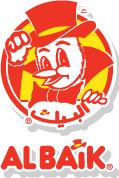[picapp align=”center” wrap=”false” link=”term=a+woman+driving&iid=5287638″ src=”f/a/0/8/CloseUp_of_a_9842.jpg?adImageId=12843106&imageId=5287638″ width=”380″ height=”380″ /]
For those not familiar with Saudi Arabia; It is unfortunate to say YES, Saudis are still debating the idea of allowing women to drive!
Anyway, this is not what this post is about, but I felt it was a mandatory introduction!
Now, let’s assume that the decision popped up and women are suddenly allowed to drive. From business and marketing points of view, what kind of change or new opportunities that could come up as a result of the new situation? Here are some points I thought of:
- Automobiles Selling Tactics: Car dealers should really change, or at least introduce new selling tactics and marketing campaigns targeting women. Many researchers have argued that the way men and women approach the final purchasing decision is remarkably different. For that, ways to target segments divided based on gender should be different as well. And believe it or not, such studies have already started to take place in Saudi Arabia once the driving debate started to heat up few years ago, at least this is what a marketing manager in one of a prominent Saudi car dealer told me.
- Car Accessories Shops: Women, at least of a younger age, will be definitely looking to have distinguished cars; exactly like their counterparts males. So I won’t be surprised to see car accessories shops opening whole sections specifically for ladies. Or even better, complete new accessories shops for ladies only, operated by ladies only!
- Pimp-her-Ride: This could be related to the pervious point, but with those who have some extra cash to spoil themselves, and their cars!!
- Segregated Car Service: Whether we are talking mechanic shops, car cleaning, oil change, etc, There is a huge opportunity to create women-only shops. If someone would argue here that allowing women to drive will ease the segregation between men and women we are currently seeing in the society, I would respond by saying yes but still. At least at the beginning, such women-only shops could flourish because it would give women a sense of freedom freedom they are enjoying in their closed communities. You know, taking off their Abbayas and enjoying chit-chat with friends in a closed area while their car is serviced. That will definitely be much better than waiting in line in most-of-the-time dirty oil change shops! So it could turn out to be a good idea after all! Even further, the existence of such shops could be a factor of helping some conservative families to make the decision of allowing their wives and daughters to drive. They will be dealing with women most of the time, right!
It does not matter how strange, funny, or shocking, these ideas might sound to some of you, because such a decision will definitely takes its toll on the society. New challenges, new obstacles, and new opportunities usually come out as results of change. Taking all that and blend it with the Saudi market status and the Saudi consumer behavior, I am sure interesting outcomes will be generated.
what do you think?


